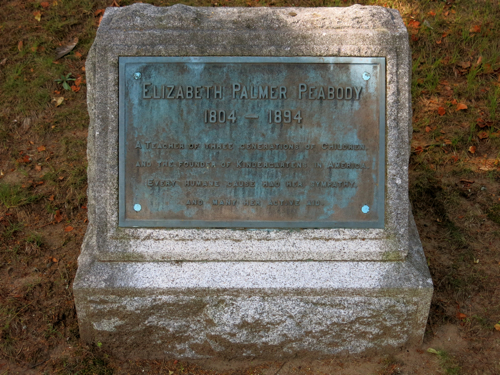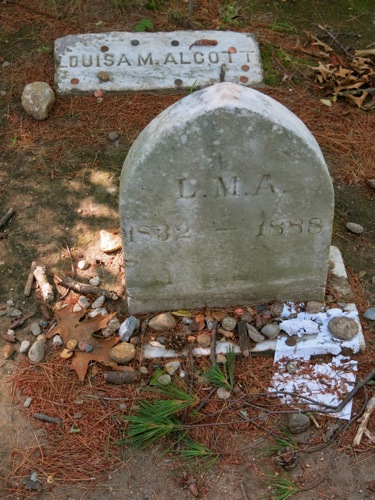Another story for liberal religious kids. I think I originally wrote this story for the First Parish in Watertown, Mass., back in the mid 1990s. I rewrote it in 2004 when I was at the UU Society of Geneva, Ill., and then forgot about it. Here’s the 2004 version:
Once upon a time, about a hundred and fifty years ago in the town of Concord, Massachusetts, a family lived in a house they called “Apple Slump.” There were four children in the family, Meg, Jo, Beth, and Amy, along with their father, Mr. March, and Marmee, their mother. At the time this story takes place, Mr. March was far away, serving in the army during the Civil War.
Jo had long, chestnut-colored hair. She was a tall tomboy who didn’t really like being a girl. Jo also had a terrible temper; she had a hard time controlling their anger. But Jo figured out a way to keep her temper under control. She had what I think of as a “mood pillow.”
“Apple Slump,” the house that the March family lived in, was a big, old, rambling New England farmhouse. Jo thought the best room in the house was the garret, a room up in the attic that had a nice, sunny window. Next to the window stood an old sofa.
The sofa was long, and broad, and low. It had been the perfect thing for the girls to play on when they were little. They had slept on it, ridden on the arms as if they were horses, and crawled under it pretending they were animals. As they got older, they had long, serious talks sitting on it, they lay down and dreamed daydreams on it.
Jo liked the sofa more than the other girls. It was her favorite place to read. She would curl up in one corner with a good book, and half a dozen russet apples to eat. As she sat reading and eating her apples, a tame little rat would stick its head out and enjoy her quiet company.
But sometimes Jo went up into the garret for a different reason. She had a terrible temper, and sometimes she would get in a horrible nasty mood. Sometimes, when she was in a particularly bad mood, she just needed to be alone.
She would run up into the garret, and pick up the pillow that was on the sofa. This was an old, hard, round pillow shaped liked a sausage. This repulsive-looking old thing was her special property. If she stood it on its end, that was a sign that any one of her sisters, or her best friend Laurence, or her mother, was allowed to come and sit down next to her on the sofa and chat; but if it lay flat across the sofa, “woe to the man, woman, or child who dared disturb it!” When they were younger, her sisters and Laurence had been pummeled mercilessly by this pillow, and now they knew better than to try to sit next to Jo when it lay flat.
I call this her “mood pillow,” and I think it’s a great idea. When Jo was in a bad mood, or angry about something, or when she just needed to be alone, she could use the pillow to let her family and friends know that they should leave her alone for a while. That way, she wouldn’t hurt those around her when she was in a bad mood.
When you’re in a bad mood, what do you do to keep from hurting those around you?


